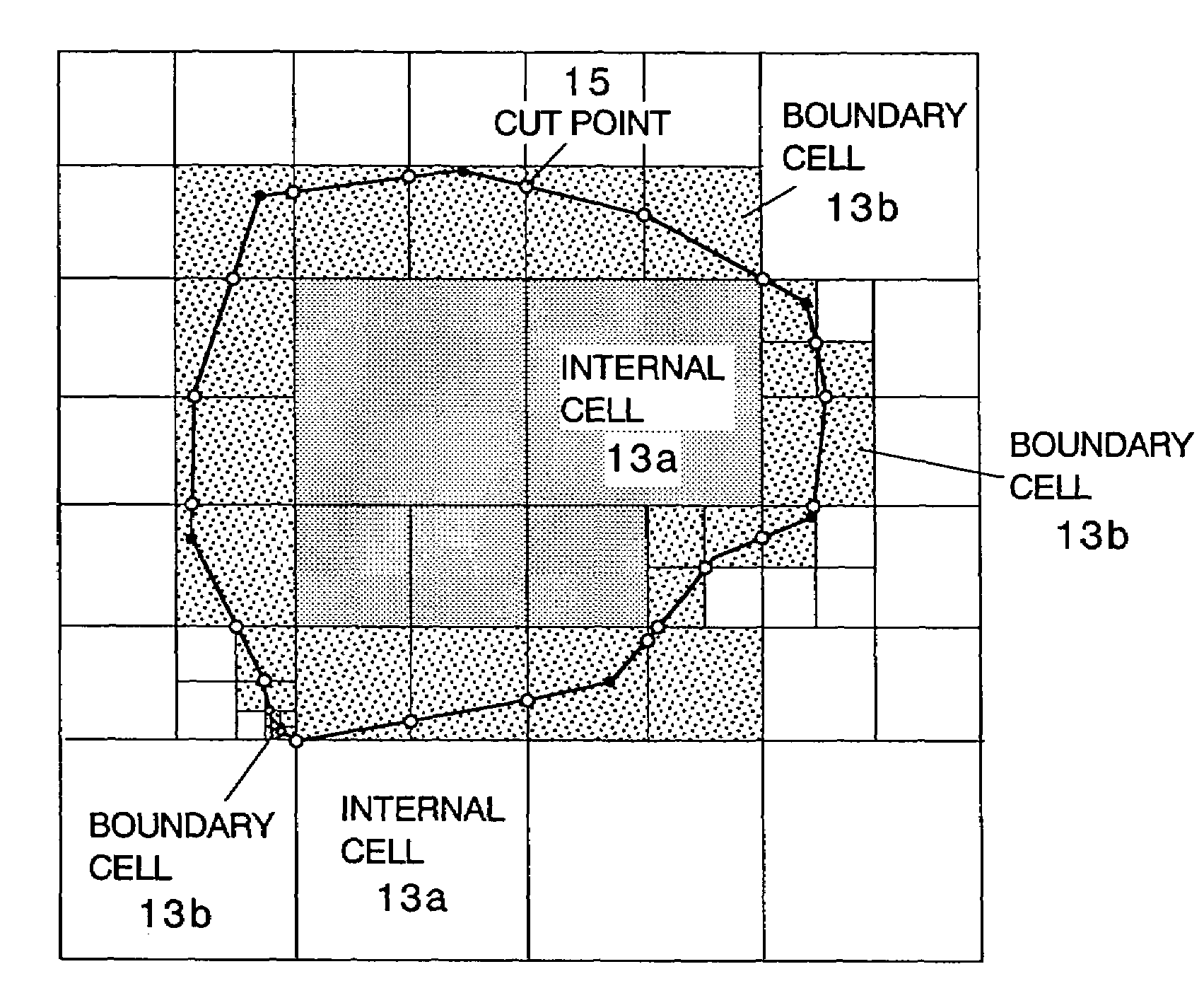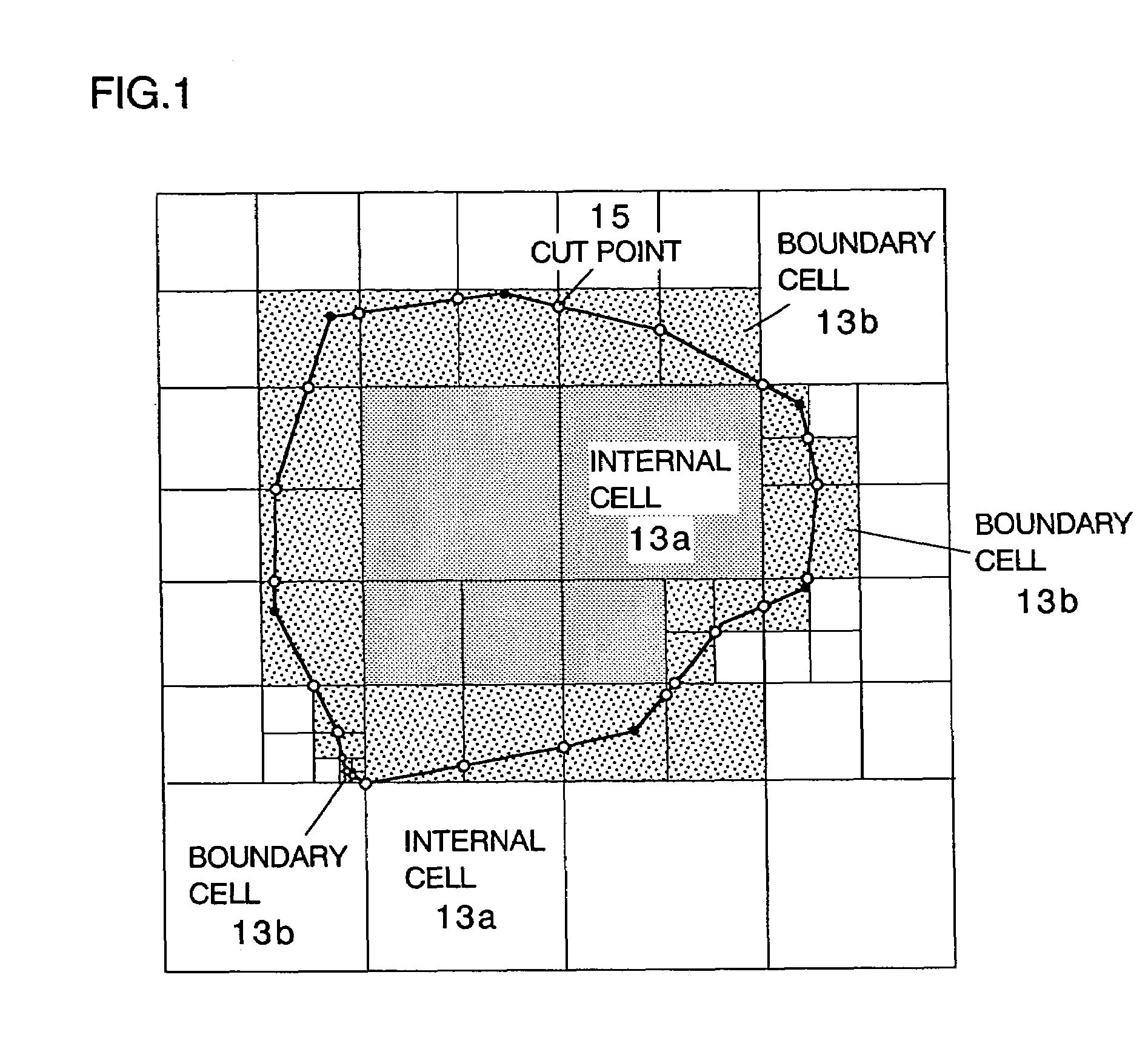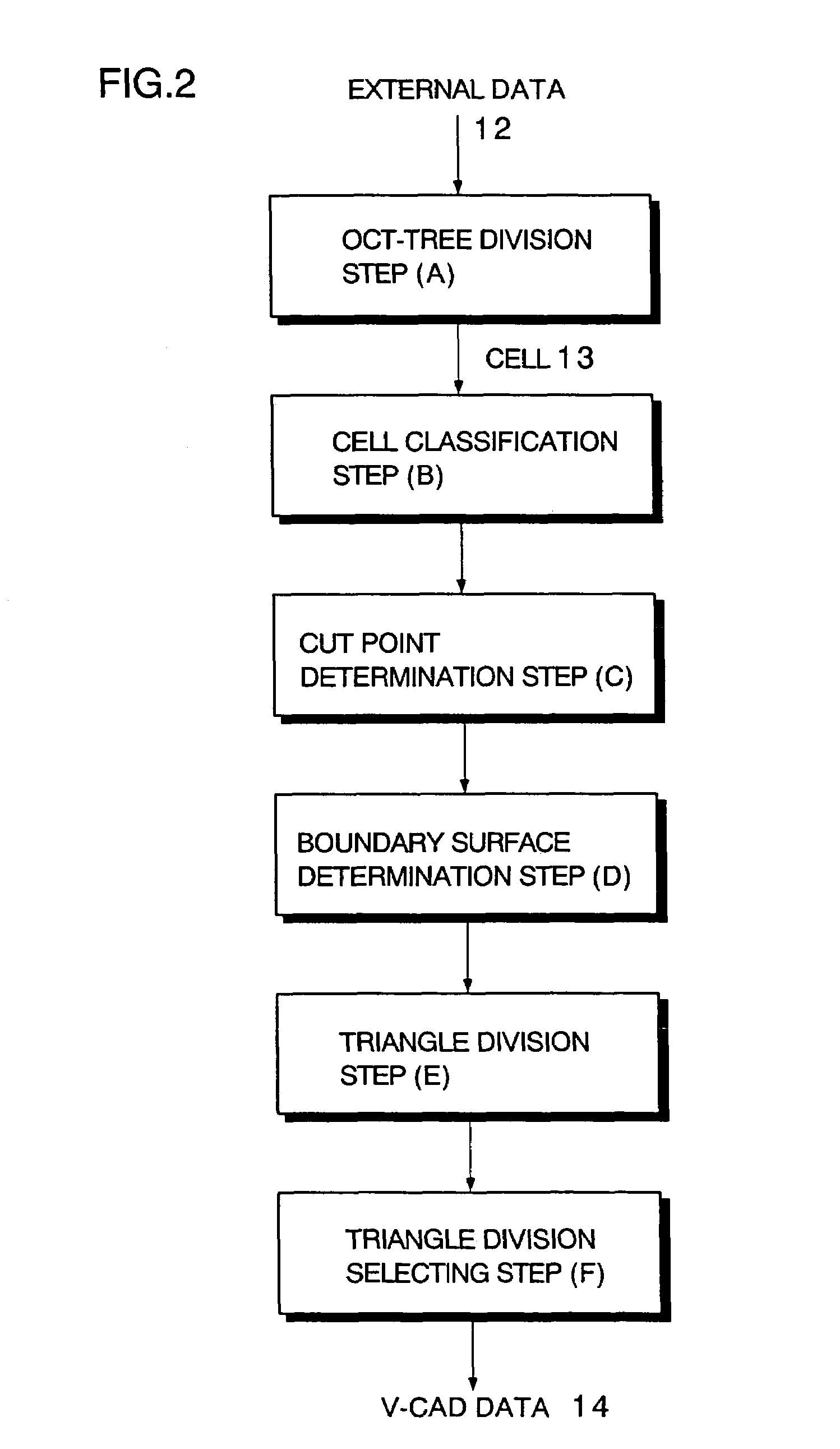Method and program of converting three-dimensional shape data into cell internal data
a three-dimensional shape and internal data technology, applied in the field of storage methods, can solve the problems of large computer time-consuming and laborious data analysis, inability to obtain information about the inside of the boundary surface directly, and the risk of failure in the development process, and achieve the effect of high accuracy
- Summary
- Abstract
- Description
- Claims
- Application Information
AI Technical Summary
Benefits of technology
Problems solved by technology
Method used
Image
Examples
Embodiment Construction
[0044]In the following, a preferred embodiment of the present invention will be described with reference to the drawings.
[0045]FIG. 2 is a flowchart of a data converting method and data converting program according to the embodiment of the present invention. As shown in FIG. 2, the data converting method according to the embodiment includes an oct-tree division step (A), a cell classification step (B), a cut point determination step (C), a boundary surface determination step (D), and a triangle division step (E), and a triangle division selecting step (F). Similar to the data converting method, the data converting program according to the embodiment includes an oct-tree division program code (A), a cell classification program code (B), a cut point determination program code (C), a boundary surface determination program code (D), and a triangle division program code (E), and a triangle division selecting program code (F). The following description is mainly directed to the data conve...
PUM
 Login to View More
Login to View More Abstract
Description
Claims
Application Information
 Login to View More
Login to View More - R&D
- Intellectual Property
- Life Sciences
- Materials
- Tech Scout
- Unparalleled Data Quality
- Higher Quality Content
- 60% Fewer Hallucinations
Browse by: Latest US Patents, China's latest patents, Technical Efficacy Thesaurus, Application Domain, Technology Topic, Popular Technical Reports.
© 2025 PatSnap. All rights reserved.Legal|Privacy policy|Modern Slavery Act Transparency Statement|Sitemap|About US| Contact US: help@patsnap.com



